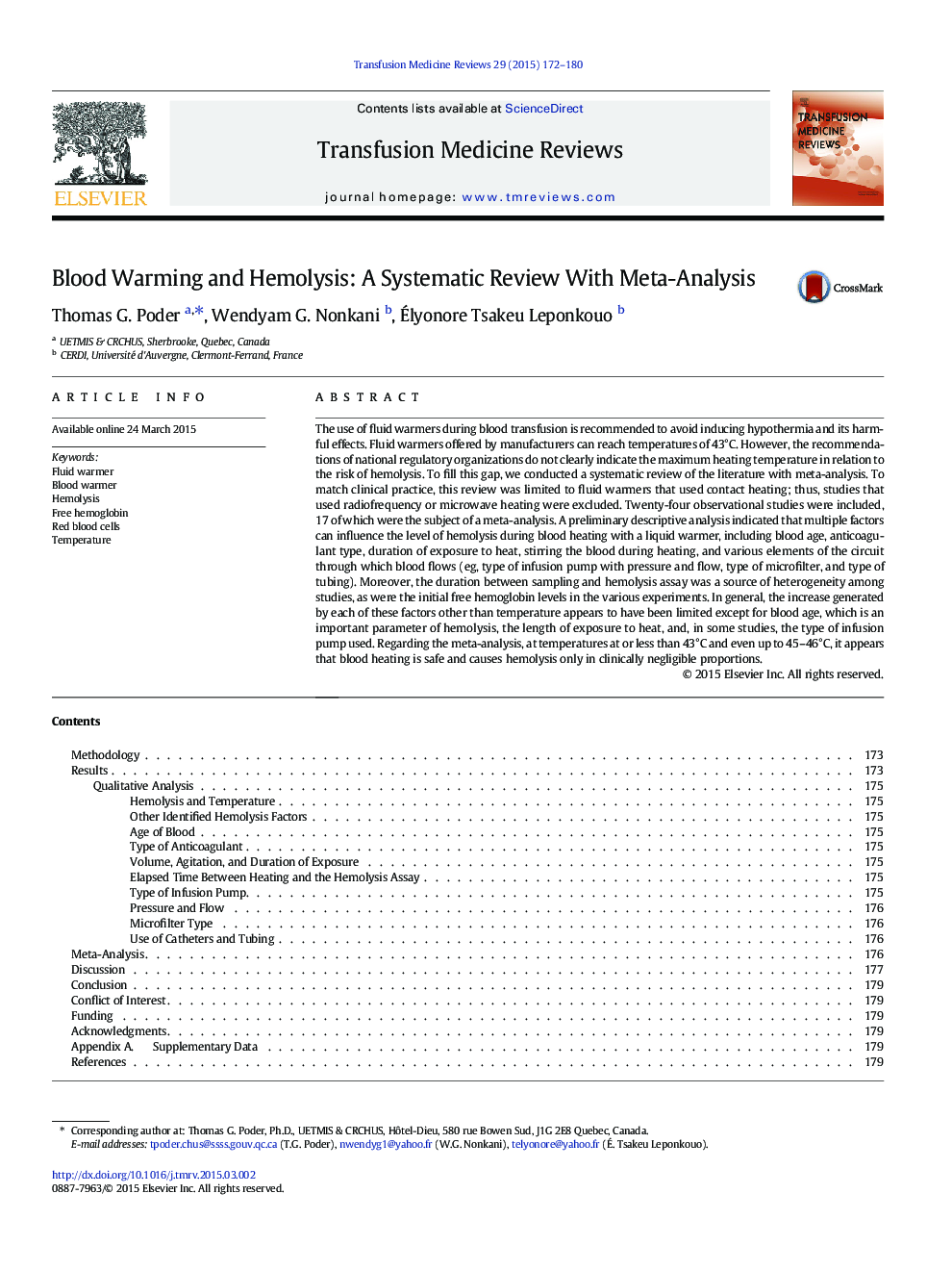| Article ID | Journal | Published Year | Pages | File Type |
|---|---|---|---|---|
| 3336475 | Transfusion Medicine Reviews | 2015 | 9 Pages |
•We conducted a systematic review with meta-analysis on the effect of blood warming on hemolysis•We only considered blood warmers that heat blood by contact•Radiofrequency and microwave warmers were excluded•We found that warming blood up to 46°C generates negligible hemolysis
The use of fluid warmers during blood transfusion is recommended to avoid inducing hypothermia and its harmful effects. Fluid warmers offered by manufacturers can reach temperatures of 43°C. However, the recommendations of national regulatory organizations do not clearly indicate the maximum heating temperature in relation to the risk of hemolysis. To fill this gap, we conducted a systematic review of the literature with meta-analysis. To match clinical practice, this review was limited to fluid warmers that used contact heating; thus, studies that used radiofrequency or microwave heating were excluded. Twenty-four observational studies were included, 17 of which were the subject of a meta-analysis. A preliminary descriptive analysis indicated that multiple factors can influence the level of hemolysis during blood heating with a liquid warmer, including blood age, anticoagulant type, duration of exposure to heat, stirring the blood during heating, and various elements of the circuit through which blood flows (eg, type of infusion pump with pressure and flow, type of microfilter, and type of tubing). Moreover, the duration between sampling and hemolysis assay was a source of heterogeneity among studies, as were the initial free hemoglobin levels in the various experiments. In general, the increase generated by each of these factors other than temperature appears to have been limited except for blood age, which is an important parameter of hemolysis, the length of exposure to heat, and, in some studies, the type of infusion pump used. Regarding the meta-analysis, at temperatures at or less than 43°C and even up to 45–46°C, it appears that blood heating is safe and causes hemolysis only in clinically negligible proportions.
